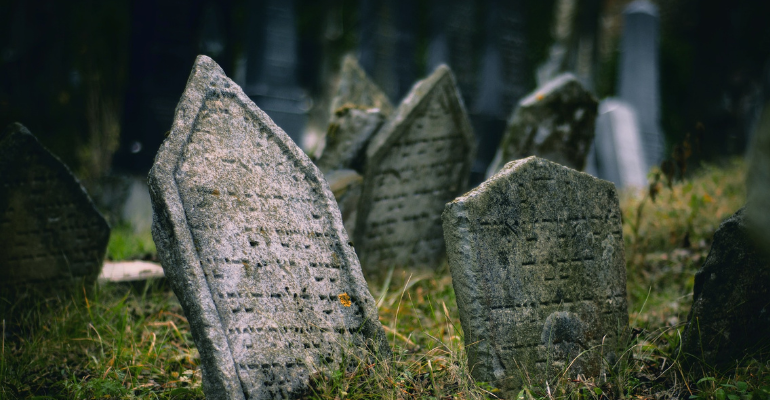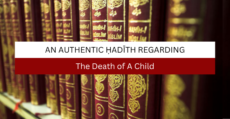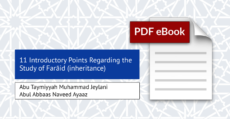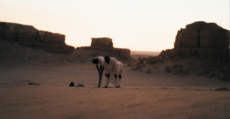Reference: http://www.ferkous.com/site/rep/Be9.php
Question: What is the ruling on placing two gravestones made from cement on the grave; then the deceased person’s name is written on one of them so that his grave is not confused with another grave. May Allāh bless you.
Response: All praise is due to Allāh, Lord of the worlds. May salutations of praise and peace be upon he whom Allāh sent as a mercy to creation; upon his family, companions and brothers until the Day of Judgment. Thereafter,
The base ruling is that building upon graves, cementing over them, writing or sitting on them is not permissible. This is due to the ḥadīth:
The Messenger of Allāh ﷺ forbade that the graves should be plastered, sat upon, built upon, added to them or written upon. [1]
Also, the ḥadīth of Abul Hayyāj al-Assadi who said, ‘Alī ibn Abī Tālib, radiAllāhu ‘anhu, said to me, “Should I not send you with the instructions that the Messenger of Allāh ﷺ sent me with?
That you should not leave any image in a house except that you should deface it, nor a raised grave except that you should level it. [2]
Although the people of knowledge forbid all types of writing on the grave, they exempt what is required due to a necessity such as knowing the grave. This is done by merely writing the name of the deceased but not for beautification. This ruling is analogically proven, due to the Prophet ﷺ placing a stone on the grave of ‘Uthmān bin Maẓ’ūn. [3]
So this is an exemption from the general prohibition by way of analogy, and this is permissible according to the majority of scholars.
However, this is restricted to the minimal amount of writing by which the deceased will be known, in case it is feared that it will be removed or forgotten. This can be done by writing his name or an identification number – but without building upon a grave.
This is in implementing the principle: “Whatever is permitted due to a necessity, its allowance is removed when the necessity is removed.”
So this would apply where a grave cannot be identified by simply placing a stone near it. This is all due to actualising the objective for which the Prophet ﷺ placed a stone on the grave of ‘’Uthmān bin Maẓ’ūn, he said:
By it, I know the grave of my brother and I will bury near it those who die from my family [4]
All knowledge is with Allāh, the most-high; and our last call is that all praise is for Allāh, the Lord of the worlds, and may salutations of praise and peace be upon our Prophet Muhammad, his family, companions and brothers until the Day of Judgement.
Footnotes
[1] Narrated by Jābir; Collected by Muslim.
[2] Narrated by Abul Hayyāj; Collected by Muslim.
[3] Narrated by Anas; Collected by Ibn Mājah.
[4] Narrated by al-Matlabb ibn ‘Abdillah: Collected by Abu Dawūd.
في كتابة اسم الميت على قبره
المرجع: http://www.ferkous.com/site/rep/Be9.php
السؤال: ما حكم وضع حجرين من مادة الإسمنت على القبر، يُكتب على أحدهما اسم المُتوفَّى لتعليم قبره لئلاَّ يشتبه بقبر آخر؟ وبارك الله فيكم.
الجواب: الحمدُ لله ربِّ العالمين، والصلاةُ والسلامُ على من أرسله اللهُ رحمةً للعالمين، وعلى آله وصَحْبِهِ وإخوانه إلى يوم الدين، أمّا بعد:
فالأصلُ أنه لا يجوز بناءُ القبور وتجصيصُها، والكتابةُ عليها، والقعودُ عليها، لما أخرجه مسلمٌ وغيرُه من حديث جابر بن عبد الله رضي الله عنهما قال: “نَهَى رَسُولُ اللهِ ﷺ أَنْ يُجَصَّصَ القَبْرُ، وَأَنْ يُقْعَدَ عَلَيْهِ، وَأَنْ يُبْنَى عَلَيْهِ أَوْ يُزَادَ عَلَيْهِ، أَوْ يُكْتَبَ عَلَيْهِ” [1]
وفي حديث أبي الهياج الأَسْدِيِّ قال: قَالَ لِي عَلِيُّ بْنُ أَبِي طَالِبٍ رَضِيَ اللهُ عَنْهُ: أَلاَ أَبْعَثُكَ عَلَى مَا بَعَثَنِي عَلَيْهِ رَسُولُ اللهِ ﷺ، “أَن لاَ تَدَعَ تِمْثَالاً فِي بَيْتٍ إِلاَّ طَمَسْتَهُ، وَلاَ قَبْرًا مُشْرِفًا إِلاَّ سَوَّيْتَهُ” [2]
هذا، وإن كان أهلُ العلم يكرِّهون الكتابةَ على القبر مُطلقًا إلاّ أنهم يستثنون ما تدعو الحاجة إليه كالتعرّف على القبر بأن يُكتفى بكتابة اسم الميّت لا على سبيل الزخرفة، إلحاقًا قياسيًّا على “وَضْعِ النَّبِيِّ ﷺ الحَجَرَ عَلَى قَبْرِ عُثْمَانَ بْنِ مَظْعُونٍ” [3]
وهو من تخصيصِ عمومِ النهي بالقياس وهو جائزٌ عند الجمهور.
غير أنه يُقتصر على أدنى ما يحصل به التعرّف عليه إذا خُشِيَ زوالُه أو نسيانُه سواء بكتابة اسمه فقط أو رقمه العددي من غير الزيادة عليه ببناءٍ أو غيرِه جريًا على قاعدة:« مَا جَازَ لِعُذْرٍ بَطَلَ بِزَوَالِهِ »، وهذا إذا تعذّر تعليمه بحَجَرٍ ونحوِه، كلُّ ذلك سَعْيًا لتحقيق الغاية التي من أجلها وَضَع النبيُّ ﷺ الحجرَ على قبر عثمان بن مظعون رضي الله عنه وهي قوله: “أَتَعَلَّمُ بِهَا قَبْرَ أَخِي، وَأَدْفِنُ إِلَيْهِ مَنْ مَاتَ مِنْ أَهْلِي” [4]
والعلمُ عند الله تعالى، وآخر دعوانا أنِ الحمد لله ربِّ العالمين، وصَلَّى اللهُ على نبيِّنا محمّد، وعلى آله وصحبه وإخوانه إلى يوم الدِّين، وسلّم تسليمًا.
الشيخ محمد علي فركوس الجزائري حفظه الله
الجزائر في: 25 من ذي الحجة 1427ه
الموافق ل: 14 يناير 2007م
هامش
[1] أخرجه مسلم في «الجنائز »: (2245) دون ذكر الكتابة، وأبو داود في «الجنائز »: (3226)، والنسائي في «الجنائز »: (2027)، والحاكم: (1396)، من حديث جابر رضي الله عنه. والحديث مع ذكر الكتابة صححه ابن الملقن في «البدر المنير »: (5/320)، والألباني في «أحكام الجنائز »: (260)
[2] أخرجه مسلم في «الجنائز»: (2243)، وأبو داود في «الجنائز»: (3218)، والترمذي في «الجنائز»: (1049)، والنسائي في «الجنائز»: (2031)، وأحمد: (743)، من حديث علي بن أبي طالب رضي الله عنه
[3] أخرجه ابن ماجه في «الجنائز» باب ما جاء في العلامة في القبر: (1561)، من حديث أنس رضي الله عنه، قال الألباني في «صحيح ابن ماجه» (1/498): «حسن صحيح»
[4] أخرجه أبو داود في «الجنائز»: (3206)، والبيهقي: (6843)، من حديث المطلب بن عبد الله بن حنطب رضي الله عنه. والحديث حسنه ابن الملقن في «البدر المنير»: (2/29)، وابن حجر في «تلخيص الحبير»: (5/229)، والألباني في «السلسلة الصحيحة»: (7/161)





